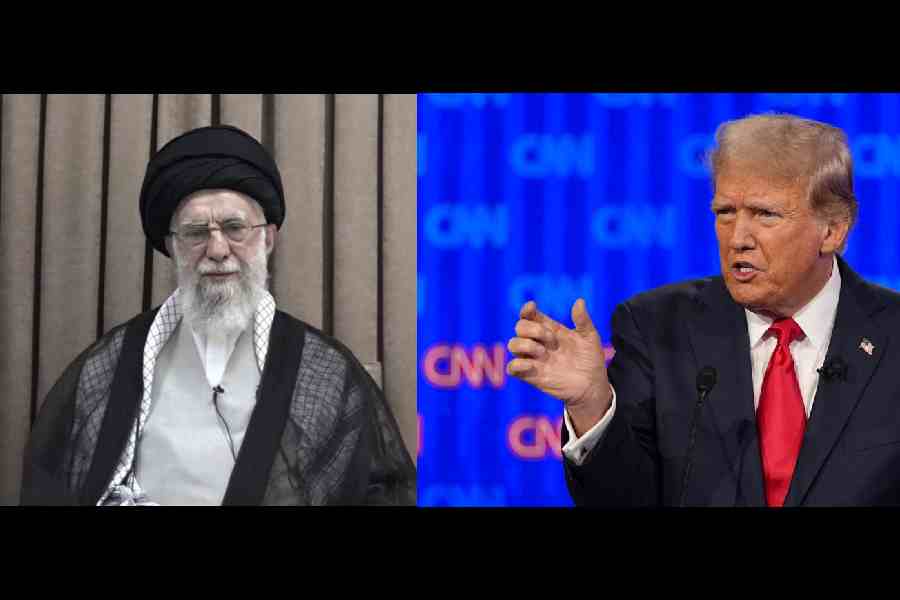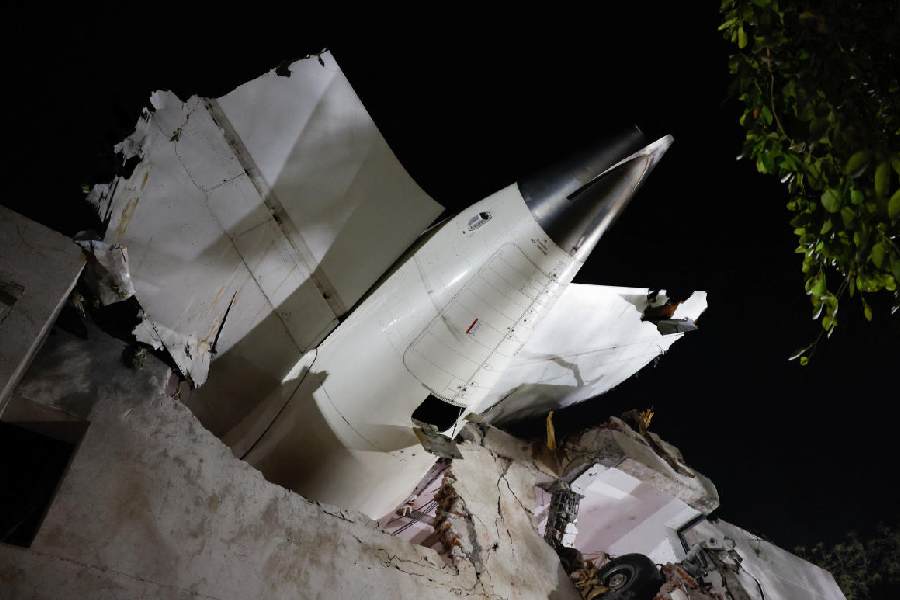One tangible benefit of Chinese Premier Wen Jiabao?s visit to India appears to be a soothing of the hot rivalry between Beijing and New Delhi over the world?s most critical commodity: oil.
It is a common strategic goal of New Delhi and Beijing to mitigate the risk of depending on imported energy by owning or controlling foreign oil fields, said Jin Linbo, director of Asia Pacific Studies at the China Institute of International Studies in Beijing.
India imports 70 per cent of the 2.2 million barrels of oil it consumes everyday and when its consumption rises to 5.3 million barrels a day by 2025, as predicted by the US Energy Information Administration, imports will constitute 90 per cent of that.
China, which is the world?s largest oil guzzler after the US, imports 40 per cent of the 6.5 million barrels of oil it consumes everyday. When China?s oil consumption doubles by 2020, the share of imports will rise to 60 per cent, says Stephen Roach, chief economist at Morgan Stanley.
With global oil production barely over consumption, Chinese and Indian oil companies have been aggressively competing with each other ? and western and Japanese firms ? to secure oil exploration rights and pipeline deals in Africa, Southeast Asia, Central Asia, Russia and Latin America over two years.
India has invested more than $3 billion in exploration ventures and has said it will continue to spend $1 billion a year on more acquisitions.
China, which has already invested about $15 billion in foreign oil fields, is expected to spend 10 times more over the next decade.
Petroleum minister Mani Shankar Aiyar has said today?s situation is a replay of the years between the two World Wars when western powers raced to find and control oil assets in West Asia.
But with the US, which is similarly dependent on imported oil, using the wars in Afghanistan and Iraq to expand its military presence in oil-rich Central Asia, an alarmed Beijing and New Delhi ?are beginning to see more value in cooperation than competition?, said Jin.
Among the 11 agreements inked by Wen in New Delhi was a deal that would see India joining the Shanghai Cooperation Organisation, comprising China, Russia, Kazakhstan, Uzbekistan, Kyrgyzstan and Tajikistan, and China joining Saarc.
That could set the foundation of joint exploration and a web of pipelines which could link the entire Central and South Asian region.
The first tangible move could see the establishment of a natural gas pipeline between India and China?s troubled western province of Xinjiang. That China is allowing India entry into this region where ethnic Uighurs are fighting for a separate homeland is an indication of the new attitude in Beijing.
But ?the greatest confidence-building measure, by any definition? could be the recently concluded deal to build a gas pipeline linking Iran to India via Pakistan, said Siavash Yaghoubi, Iran?s ambassador in New Delhi.
?Iran is a major energy supplier to both (and) talks are already on to extend the pipeline to China.?
Geo-politics and geography aside, what is facilitating energy cooperation between China and India is that both countries have adopted similar expansion models.
US dominance of the oil industry in West Asia and other oil producing regions is forcing Chinese and Indian firms to pursue deals with ?pariah? states the US will not deal with, such as Sudan, Libya and Myanmar, and their cash-rich, state-owned oil companies can take different risks from foreign private firms.
To defray the substantial costs of exploration, China and India are also privatising their energy industry. Subsidiaries of two of China?s largest state-owned oil companies, PetroChina and Sinopec have been listed on Wall Street and the billions of dollars in new capital generated are being used to restructure and modernise their operations.
India is also on track to implement similar measures and both countries have also opened up their domestic energy sector, previously considered strategic and, therefore, off-limits to foreign investors.
Companies such as ExxonMobil, which owns a 19 per cent stake in Sinopec, are being wooed not just for their capital, but also for their refining and marketing capabilities. For example, ExxonMobil is helping Sinopec establish over 500 gas stations across the country and build at least two refineries in southern China.
Sharon Hurst, a Beijing-based executive with ConocoPhillips says: ?Western investment is helping Chinese oil companies morph into world-class players.?
But the fact that Chinese and Indian oil majors are now signing deals, once almost exclusively the domain of the West and Japanese, is also leading to complaints.
Western energy industry executives in Beijing say Indian and Chinese firms observe few environmental or human rights standards, particularly in Africa, where transparency is low, regulation almost non-existent, and government officials easily bought.
For example, diplomatic sources in Beijing complain that China?s and India?s extensive oil interests in Sudan, where both are partners in the Greater Nile oil projects, are leading them to rein in the United Nations Security Council from passing sanctions against the government in Khartoum, which Colin Powell, until recently the US secretary of state, recently accused of abetting genocide in Darfur.
Robert Karniol, Asia editor of Jane?s Defence Weekly, says such tensions could bring China and India into conflict with western, Japanese and regional interests.
Other analysts also argue that China?s and India?s growing closeness gives further impetus to the idea of a strategic triangle of Russia-China-India put forward by Russia?s former Asia-centric Prime Minister Yevgeny Primakov.
Rajya Sabha MP Jairam Ramesh, who foreign minister Natwar Singh recently called India?s ?unofficial ambassador to the US?, dismisses the idea.
?All this talk of a triangle or quadrilateral (with Iran as the additional partner) is totally bogus,? he said.
?Foreign policy experts shouldn?t get into geometry. In no way will India allow its relations with China to become directed against the US.?
Rahul Bedi, the New Delhi-based correspondent for Jane?s Defence Weekly says it is also too early to assume Sino-Indian ties will blossom beyond a point. ?Serious issues still remain between both sides, particularly with the security crowd,? he said.
Though optimists ? usually corporate people ? say common opportunity will continue to lead to greater cooperation, pessimists ? mostly the security establishment ? fear that China and India, two energy-hungry giants seeking access to limited world resources, will inevitably clash with the West.
The truth, as always, will probably lie between the extremes with Sino-Indian relations fluctuating unpredictably from cooperative to contentious. Given this, Aiyar?s idea that India and China should imitate the US-European Union model for a common energy agenda makes sense. This model ? competition, but within an agreed framework ? has been proven to yield the best results.
Jehangir S. Pocha in Beijing










